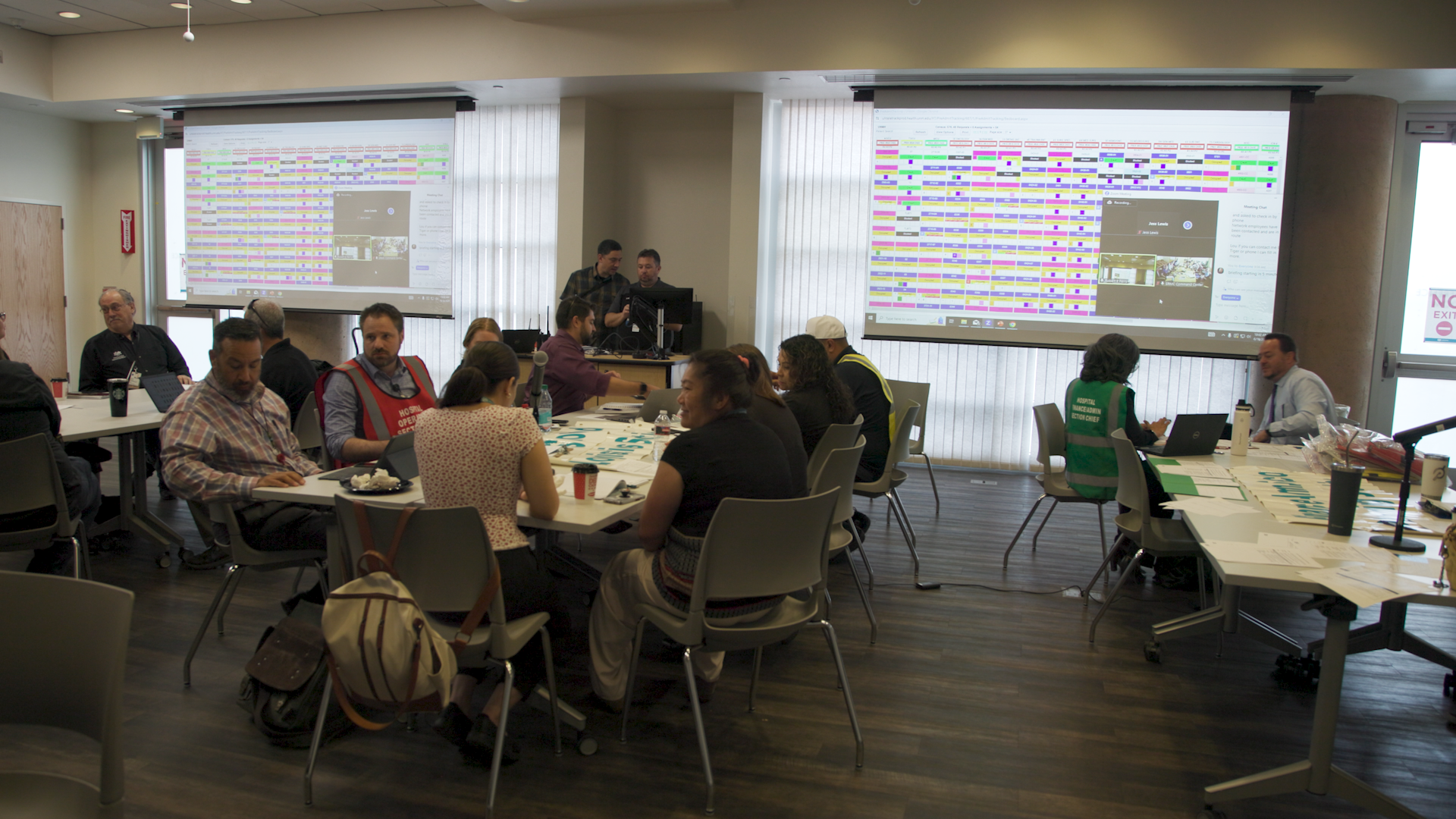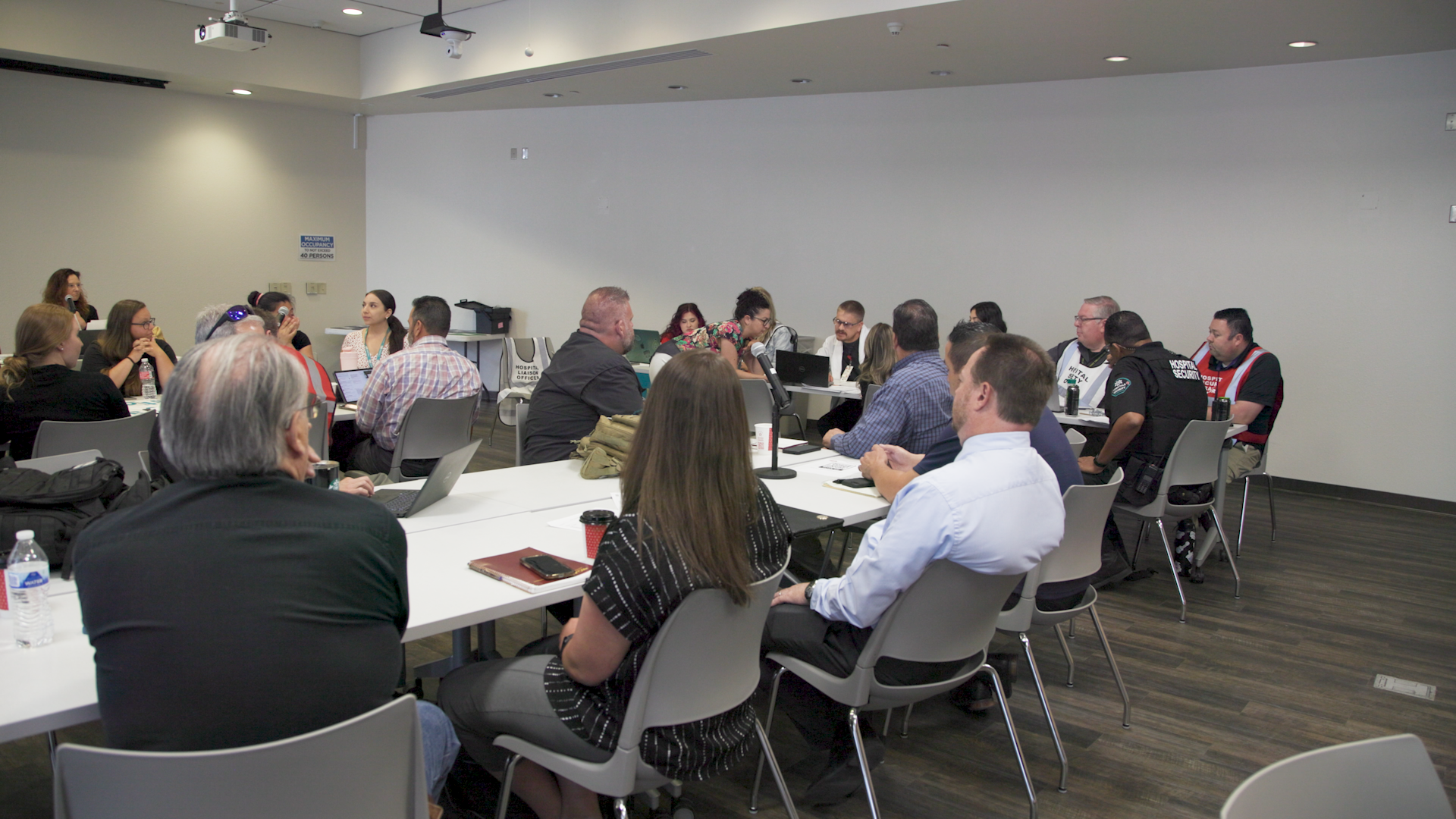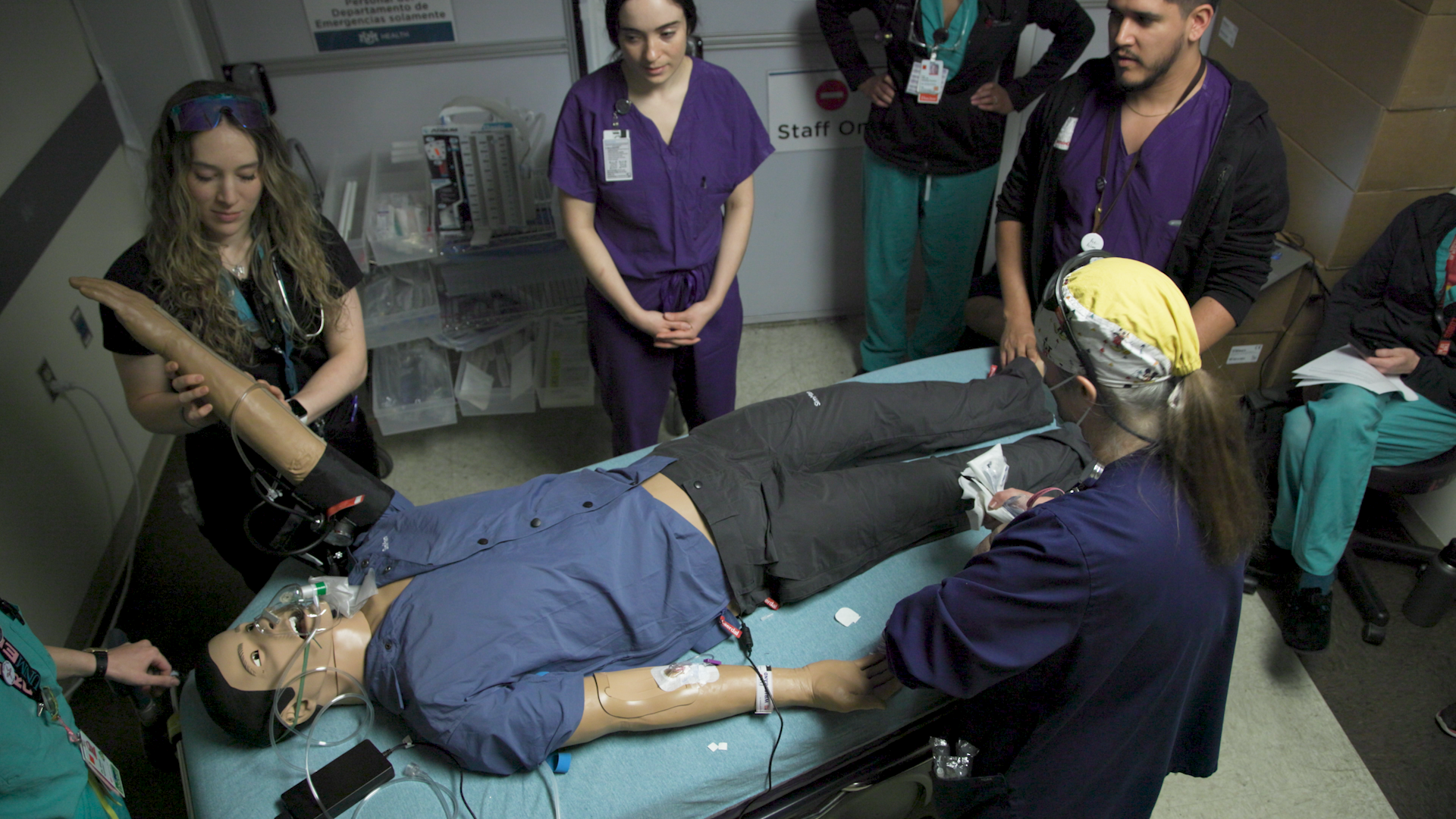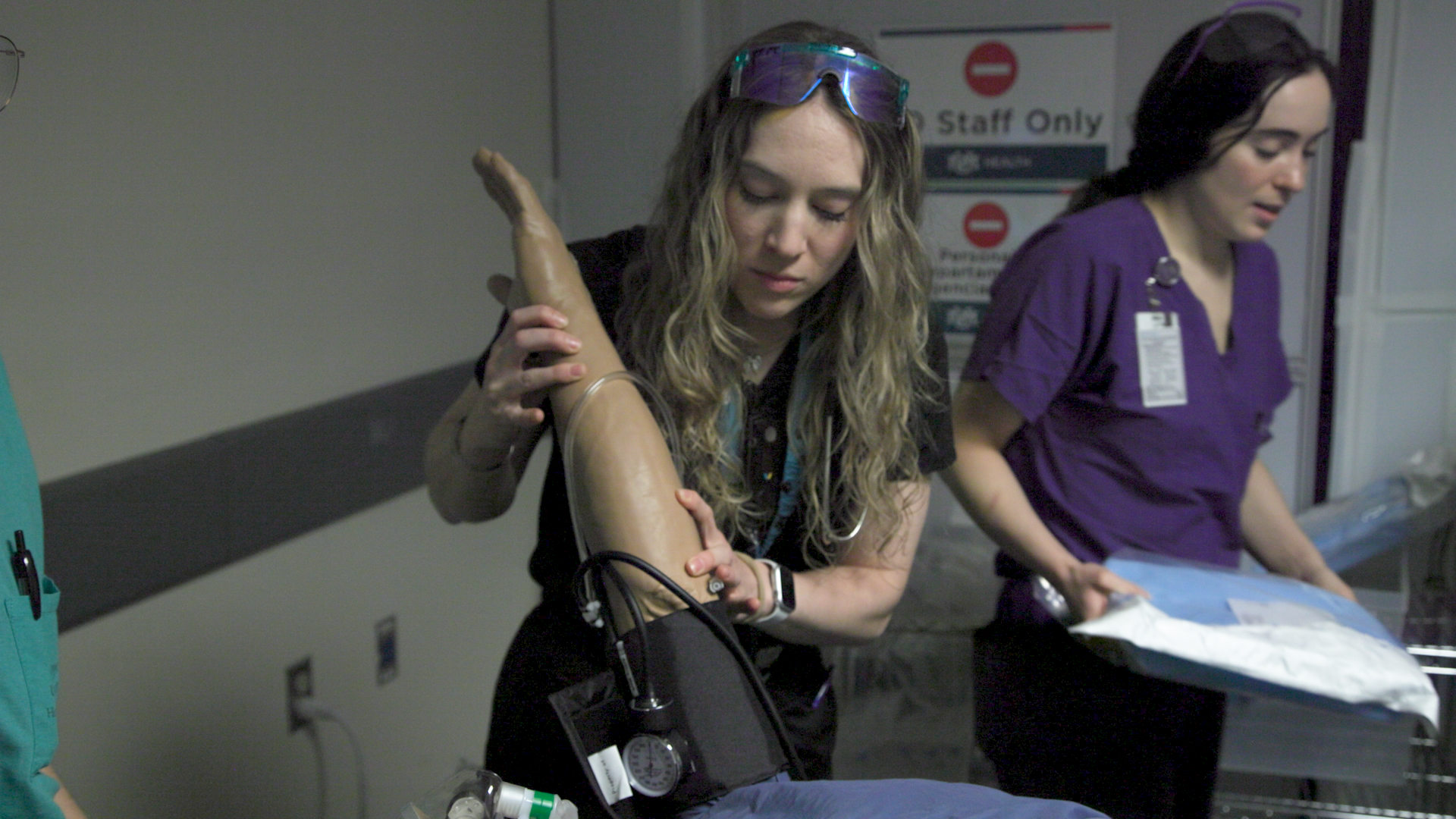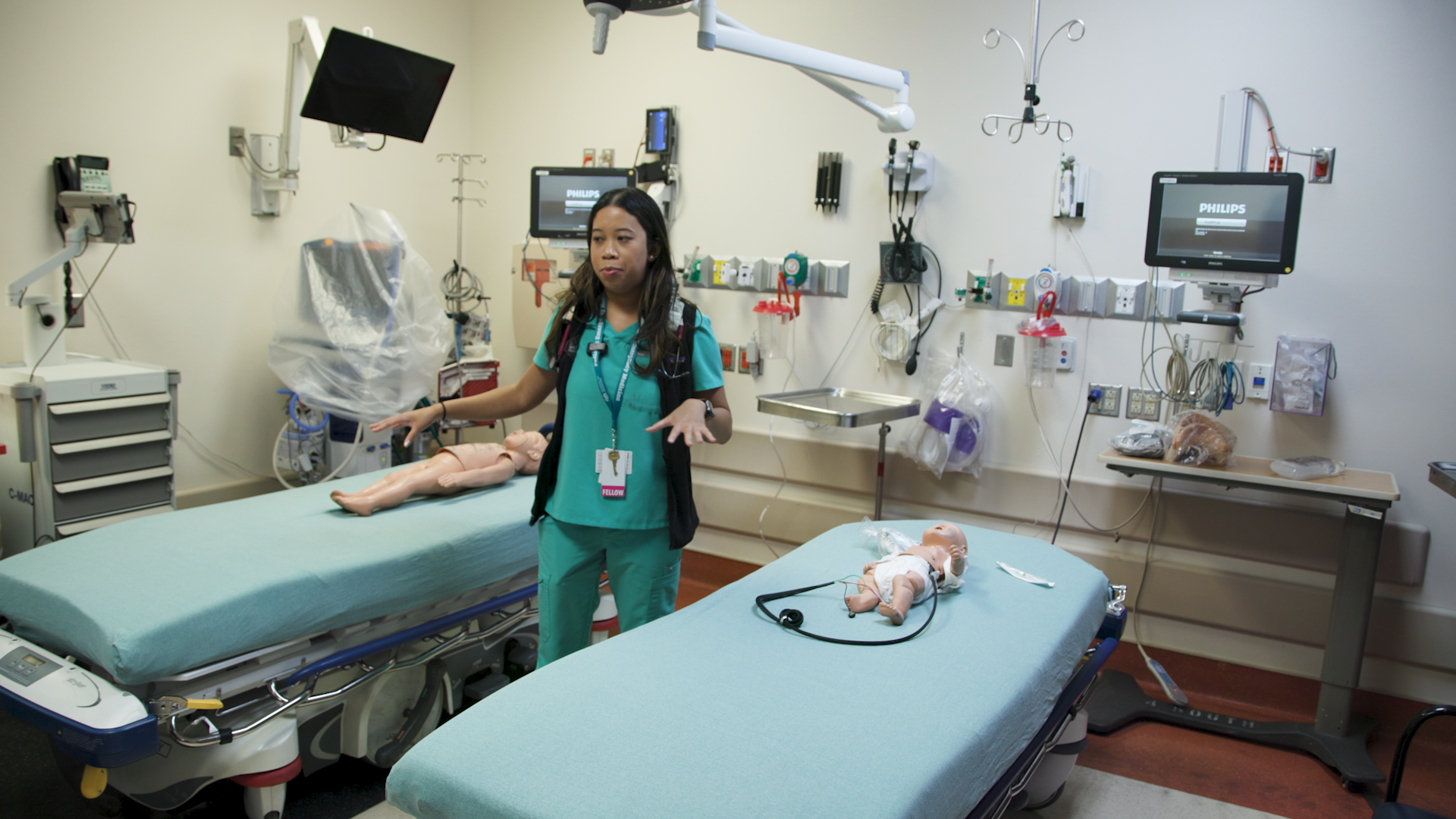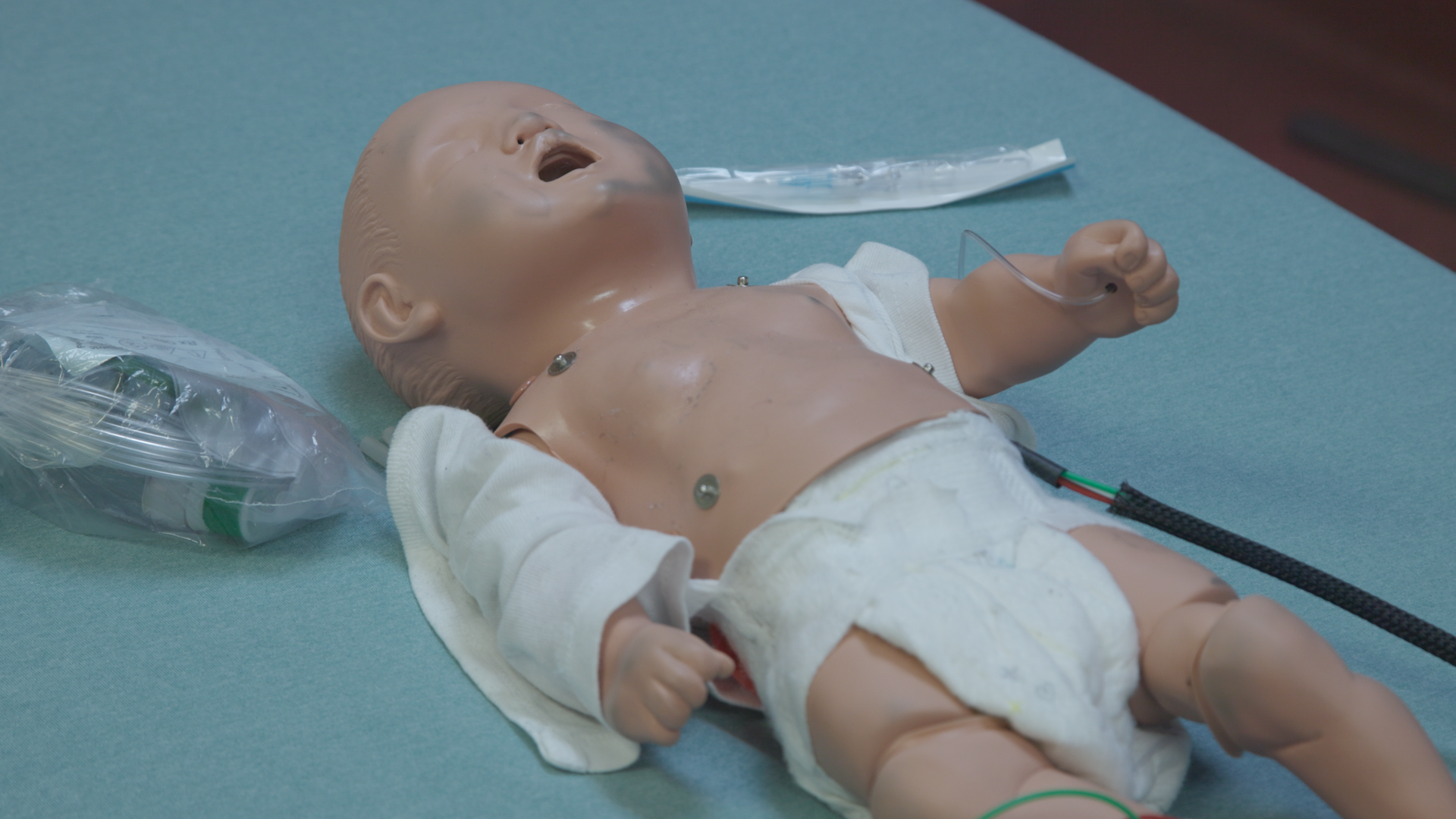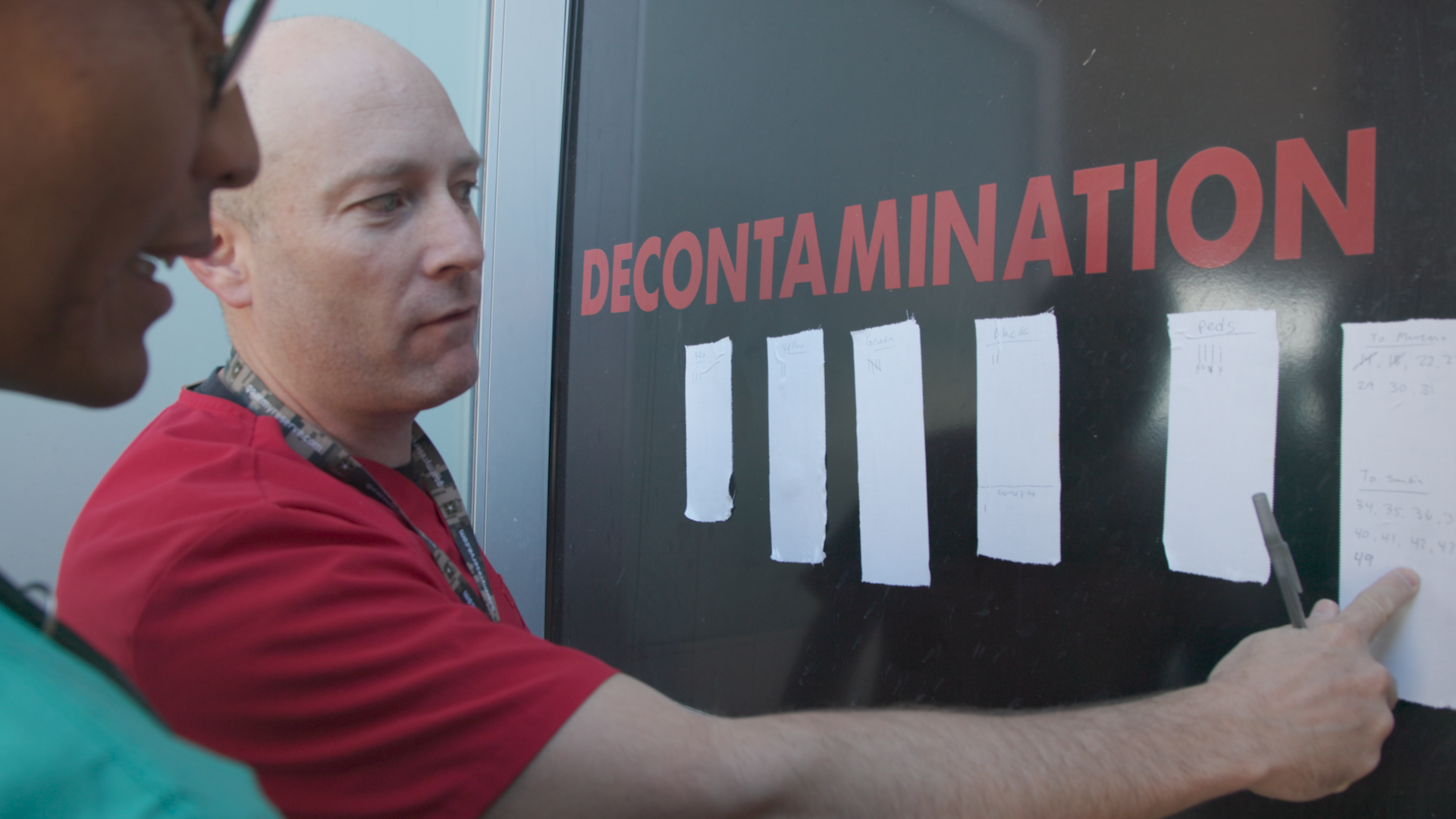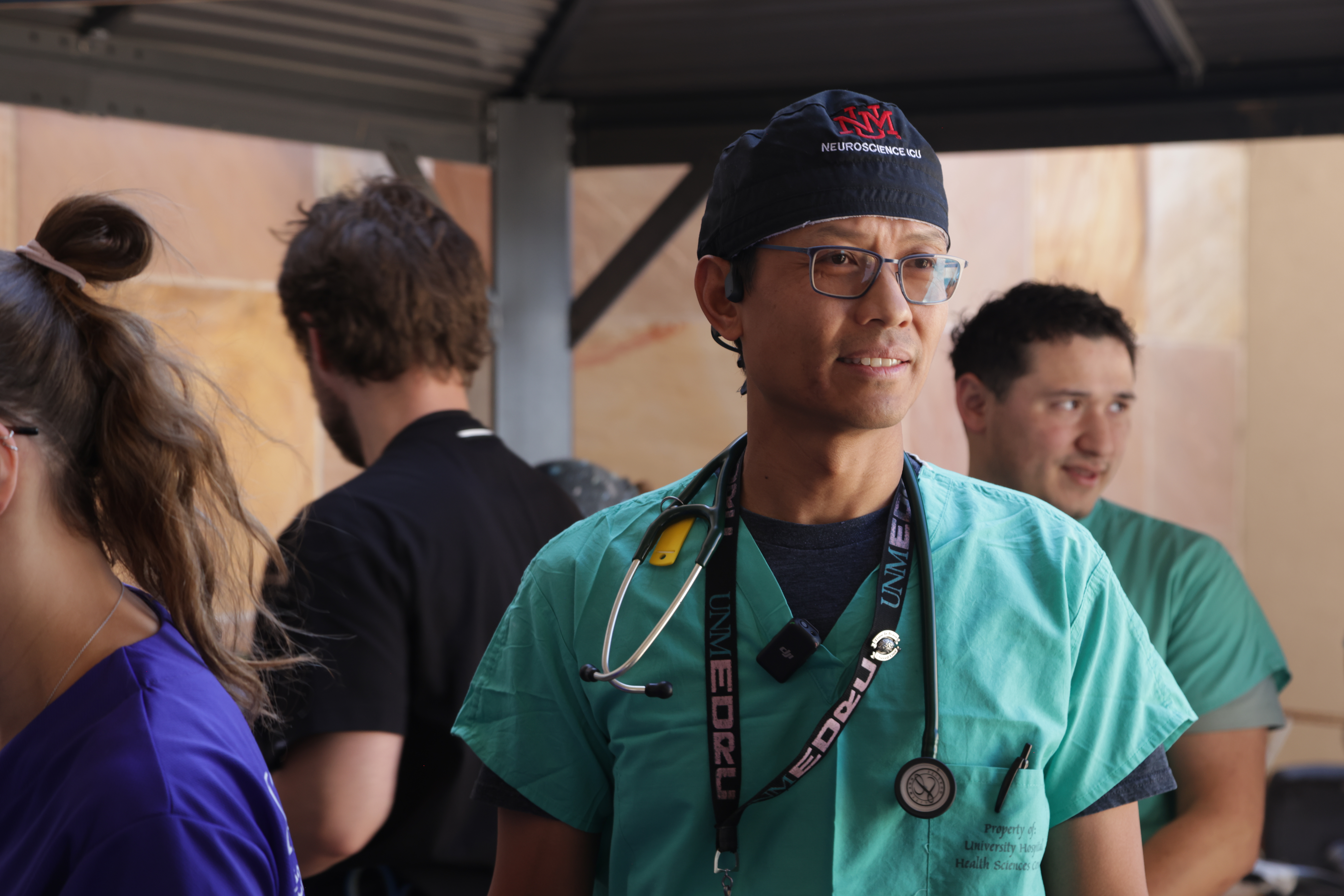Imagine a 5.6 ground rupturing magnitude earthquake occurs without warning in the Rio Grande Rift on the Sandia-Rincon fault. Violent shaking and heavy damage is recorded along the 30-mile stretch from Algodones to Kirtland Air Force Base. As a result, 60 percent of Albuquerque is without power, several major roads have collapsed and hundreds, if not thousands, of people are injured.
This has not happened, but according to local researchers, it could. Health care leaders across the Albuquerque Metro area want to be prepared in case it ever does happen.
That is why dozens of departments within The University of New Mexico Health System, including UNM Hospital, UNM Sandoval Regional Medical Center (SRMC)—a campus of UNM Hospital—UNM Main Campus, and several external entities like Sandia National Laboratories, the City of Albuquerque, Bernalillo County, Kirtland Air Force Base, Presbyterian and Lovelace Health Systems, and several others all came together to respond as they would during a real emergency.
“Disaster and emergencies strike at a moment’s notice, and it is our mission that staff and leadership are ready to face any challenges and patient surges that come with that emergency or disaster, whether they are minutes or years long.”
During a region-wide mock training exercise earlier this week, the organizations formed multiple mock Emergency Operations Centers (EOCs) to coordinate and plan for patient care.
Todd Christensen, RN, DNP is an administrative supervisor of nursing at UNM Hospital, but in this simulated scenario, he took on the role of Incident Commander for the UNM Hospital EOC. In addition to direct care providers, EOCs include representatives to handle finances, logistics, internal and external communications, and more.
“EOC specifically is led by our hospital executive team, that would be able to mobilize and provide all of the resources that are needed,” Christensen said. “It also opens up our ability to gather resources from not only our general area, but also the state level, for the care that needs to be given to all of our patients.”
An exercise like this not only helps these teams prepare for a potential earthquake, but any other possible emergencies that could arise in the metro area that would require an all-hands-on-deck response and cross-organization collaboration across the city, state and potentially the country. For example, EOCs were activated at the start of the COVID-19 pandemic in 2020 at organizations throughout the United States, and continued meeting regularly for years to manage care and the ever-changing situation with the virus.
“We have to collaborate for all of the patients that could be affected by such a tragic incident” Christensen said. “UNMH cannot stand alone to care for all of those patients, nor could Presbyterian or Lovelace, so working as a team, collaboratively, would allow us to provide care to all of the patients that are within in the area.”
For Robert Alunday, MD, an associate professor in the UNM School of Medicine tasked with running triage in the UNM Hospital ambulance bay, his focus for the scenario was preparing to take on the most injured patients in the area. Since UNM Hospital is the only Level I Trauma Center in the state, it is the only facility equipped to handle the most severe cases. To make the simulation more like a real scenario, care teams at UNM Hospital formed to quickly diagnose and treat mannequins acting as patients.
“We have had patients with trauma, such as penetrating injuries from falling debris and blunt injuries from car accidents, and we have had chemical exposures from chemicals essentially raining down on top of people,” Alunday explained. “We are all taking this very seriously. We're making ourselves feel that stress of having this high influx of patients come to us, and we're trying to do everything right.”
Meanwhile, UNM SRMC, a Level III Trauma Center, simulated reaching out to Level I Trauma Centers outside New Mexico to ask if they could take SRMC’s most severe cases and prepared those patients for transfer. This helped level load the volume between outside trauma centers and UNMH. SRMC also made sure they were prepared to handle an influx of patients with traumatic brain injuries, fractures and internal bleeding.
While it is important to make sure backup generators are ready to go, hospitals also need to have enough oxygen, medication and blood supply. EOCs also need to be thinking of food, water and fuel supply. During the recent exercise, SRMC’s EOC discussed building tent cities, buying trailers to move larger equipment, hiring engineers to repair simulated hospital damage, and making sure financial representatives logged every penny and labor hour spent for potential federal reimbursement.
Internal and external communication play an important role in disaster preparedness as well. For example, the teams at UNM Hospital and SRMC identified areas for families and friends to wait for mock patients and inquire about loved ones whose whereabouts were still unknown. They communicated to all hospital staff, both on shift and off, to come in and help if they could safely make it to the hospital, and they provided safe media staging, so local news agencies could continue to update the public on this developing situation, without interfering with patient care and privacy.
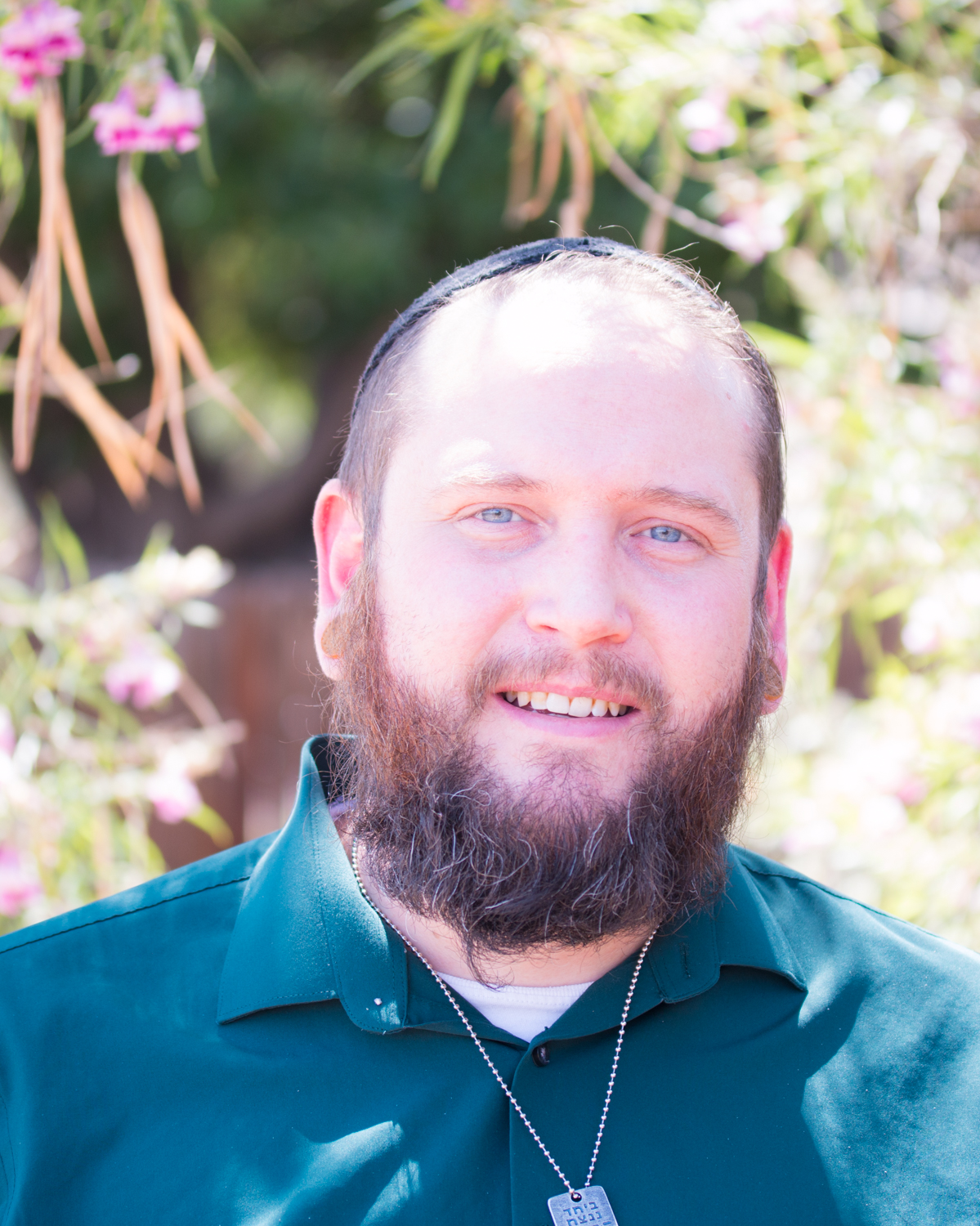
“Every time we do these events, we just get a little bit more ready, and we get a little bit better."


